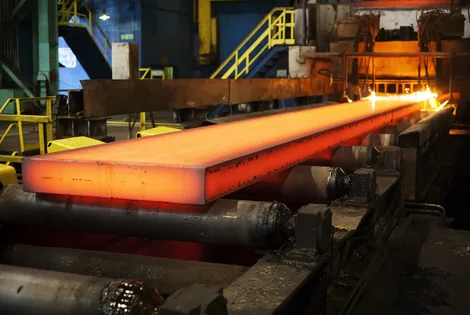US steel production declined in the week ending September 14 as domestic steel mills continued to operate below 80% of their capacity, according to the latest weekly report from the American Iron and Steel Institute (AISI).
Capacity utilization, a key metric in the steel industry, has remained below the important 80% level (the minimum required for sustained industry profitability) for the third straight week. American steel mills operated at 77.8% of their capacity last week. The utilization rate for the previous week was 78.8%. Capacity utilization also declined for the week from 79.6% a year ago, according to AISI.
Total YTD (to 14 September) steel production on an adjusted basis was 68,959,000 net tonnes at a capacity utilization rate of 80.7%, up 3.8% from 66,455,000 tonnes recorded in the same period a year ago, when using capacity, the rate was 77.5%.
According to AISI, production capacity in the third quarter of 2019 is approximately 30.6 million tonnes, up from 30.8 million tonnes a year earlier and 30.3 million tonnes in the second quarter of 2019.
The Trump administration's imposition of high penalties on steel imports helped the U.S. steel industry surpass 80% capacity last year, remaining below that level for years. Tariffs boosted the production capacity of US steel producers amid declining imports, and also boosted domestic steel production.
The trade action also prompted a number of US manufacturers to invest heavily in capacity and capacity upgrades. However, increased production from additional capacity contributed to a sharp decline in US steel prices this year.
The slowdown in the global economy and lower demand for steel are other factors driving the decline in steel prices. Steel demand in the US and Europe declined. Moreover, a slowdown in the Chinese economy amid trade tensions with the United States has led to a decline in demand for steel in China, the world's largest consumer of the commodity.
Notably, after hitting multi-year highs based on wide-ranging tariffs on imported steel, US steel prices have now fallen to pre-tariff levels. Estimated prices for hot rolled steel coils declined in the second quarter of 2019 and continued to decline in the third quarter, in part due to weak demand. Several US steel companies have recently taken steps to cut capacity after the cut
US steel capacity remains below 80% utilization

|
|
Azovpromstal® 23 September 2019 г. 11:27 |





